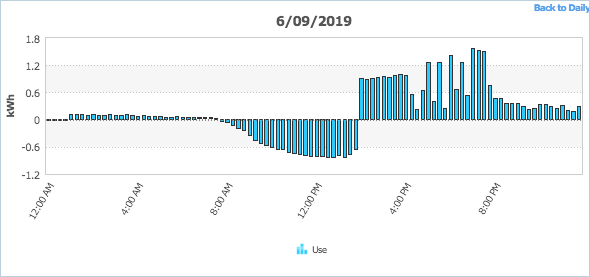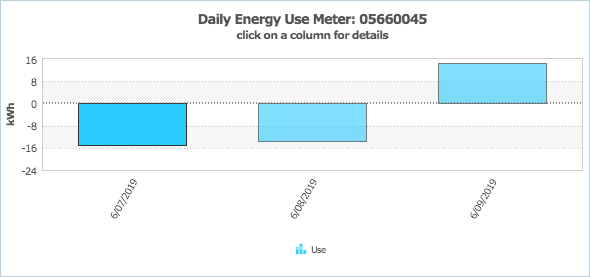Just one week ago, here in Southern California, the temperatures were hovering in the mid-70s. Well, what a difference one week makes (6/10/19), and it looks like summer temperatures are here to stay. With high temperatures comes significant air conditioning use. The high utility bills are not too far behind if you don’t have solar panels (or don’t have enough).
With the cost of electricity in San Diego Gas & Electric territory at all-time highs, using air conditioning can cost you a pretty penny.
How much it costs to use AC depends on several factors, namely:
- The outside temperature
- The age and model of your unit
- The current cost structure of electricity
Solar for AC: How much power does AC use?
We can’t control the outside temperature, so we will focus on the AC unit model you are running when determining how much power it uses.
If you utilize a small portable unit, your usage will be considerably lower. While the smaller AC units may use less electricity, they also cool air down a lot slower and in lesser volumes. This means you may have to keep the unit running for longer, or the room may not get as cool as you would like it to. Another drawback is you may need more than one of these units running simultaneously if you are trying to cool down a larger room.
Older units that may not be as efficient may also draw more power, causing you to use more electricity over the same period. When considering a new AC unit for your home, size it according to the room you want to cool.
Ultimately, the type, size, and age of the AC unit will significantly affect how much power it will consume. San Diego doesn’t have the most favorable cost for electricity.

Air conditioning usage examples
Solar for AC: How much does it cost to use my AC?
Again, calculating how much you will pay to run the AC will be somewhat out of your control. Unfortunately, utility companies don’t make it easier. Between the tiered rate structure of San Diego Gas and Electric and their Time of Use rates, anyone can guess how much running the AC unit will cost. As of this writing (6/10/19), the cost of tiered rates starts at .19 cents per kWh and can go as high as .55 cents per kWh.

Tiered SDGE rates
If you happen to have a small unit and you use it sparingly, there is a chance that you will not be bumped into higher rates of electricity. If you have a larger AC unit and run it several hours a day, you can quickly be staring down a $450/month bill just for using AC once you go into the higher-cost tiers. Suppose you are on the Time of Use rate and run that smaller AC unit in the afternoon when rates have increased. You will already be paying more.
- The on-peak prices are the highest: 45 cents per kilowatt-hour in the summer (June 1-Oct. 31) and 24 cents per kilowatt-hour in the winter (Nov. 1-May 31).
- Off-peak prices fall to 21 cents a kilowatt-hour in the summer and 23 cents in the winter.
- Super-off peak prices are even lower: 16 cents a kilowatt-hour in the summer and 22 cents in the winter.
Installing solar panels to power your AC
The good news is that you can install solar panels on your property to make up for the cost of running your AC system and save significant money while living comfortably in your home. Besides the constant sunshine, the beauty of solar panels in San Diego is that SDGE allows for favorable net metering terms, which makes a solid case for installing solar.
I had installed on my home a 5kW system that provides about 25% more power than my home used before I installed solar. During the part of the day when I don’t use excess energy, it all goes back to the grid, and then when I need additional power, I pull it from the grid via net metering. This allows my power consumption in real-time to be paid for from credits my solar system added to my utility bill in the form of excess production.

Solar production and AC use
In the example above, you can see that my panels started feeding the grid power at about 0730 on a sunny morning. As the heat began to rise, I turned on both AC units in my home. One is a 5-ton unit, and another is an in-wall unit. I ran the AC units in the house until about 10 p.m. I used more power for the day than my system produced, as seen in the three-day window below. You can clearly see my usage skyrocket in this 15-minute interval reading.

AC usage vs. the previous day’s solar production
As you can see above, air conditioning uses a lot of power. It is not uncommon for homeowners to get utility bills that are several hundred dollars more per month during the summer. Here in southern California, where rates are significantly higher than in other parts of the country, you can see why people turn to solar.
When this happens, there is a “solar rush” that companies experience as customers react to the high cost of running their air conditioning units.
Start getting your quotes free with DroneQuote. DroneQuote finds the most competitive price and delivers multiple quotes the easier way. Watch the video below to understand how DroneQuote works:
